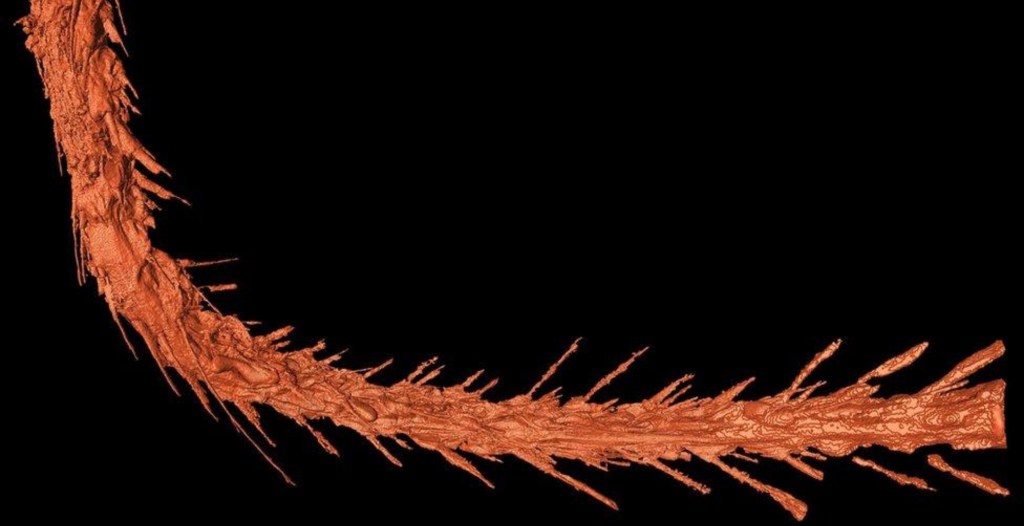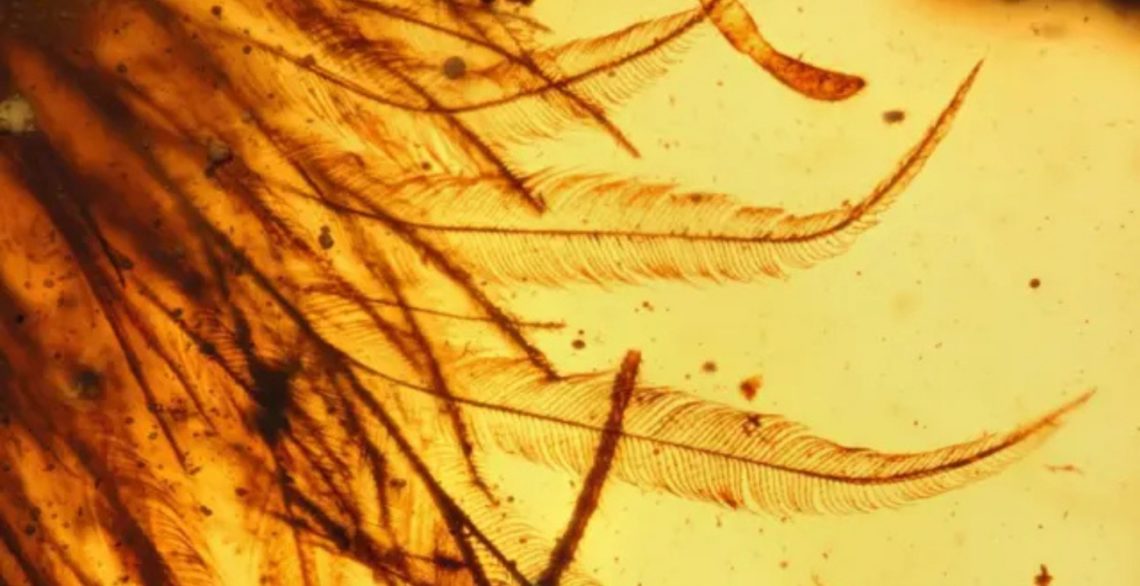In northern Myanmar, a market vendor almost sold off a major scientific discovery for a few bucks. He had a lump-sized piece of amber with a leaf inside that he was about to turn into jewelry. A visiting paleontologist stopped, leaned in, and realized it wasn’t a plant trapped inside at all. It was the tail of a dinosaur—feathered, intact, and nearly 100 million years old.
The discovery, now described in Current Biology, has become one of the most complete snapshots of dinosaur evolution ever captured. The amber holds soft tissue, tiny bones, and fully formed feathers that still show traces of chestnut and white pigmentation. The detail is so incredible that scientists can see individual filaments and melanosomes—the microscopic structures that give feathers their color.
Chinese paleontologist Xing Lida, who first spotted the fossil while browsing the market, told CNN, “I realized that the content was a vertebrate, probably a theropod, rather than any plant.” The vendor, unaware of what he had, didn’t raise the price, and the paleontologist walked away with a scientific milestone.

Scientists Found a Dinosaur Tail in Amber That Was Almost Sold as Jewelry
The 6.5-gram piece of amber contains eight preserved vertebrae, still articulated, from a small, non-avian theropod. Ryan McKellar of the Royal Saskatchewan Museum, a co-author of the study, called it “a once-in-a-lifetime find,” adding that “the finest details are visible and in three dimensions.” Unlike typical rock fossils, which flatten over time, amber captures organic structures exactly as they were.
This discovery confirms that some dinosaurs had feathers structured more like ornamental plumage than flight equipment. The tail’s contour feathers lack the central shafts seen in modern birds, suggesting they were used for display rather than flight. Researchers believe the animal was roughly the size of a sparrow, and it had a flexible tail that may have helped it balance or signal.
The specimen also preserved fragments of soft tissue and dried blood, though scientists were quick to dismiss any “Jurassic Park” fantasies. “Unfortunately, the Jurassic Park answer is still a ‘no.’ This is firmly in the realm of science fiction,” McKellar said.
Even without DNA, the fossil represents a scientific windfall. It offers the first direct evidence of a feathered dinosaur preserved in 3D, revealing how these creatures bridged the evolutionary gap between reptiles and modern birds. What began as a near-souvenir now stands as one of the most important finds in dinosaur history.
The post Scientists Found a Dinosaur Tail in Amber That Almost Became Jewelry appeared first on VICE.




